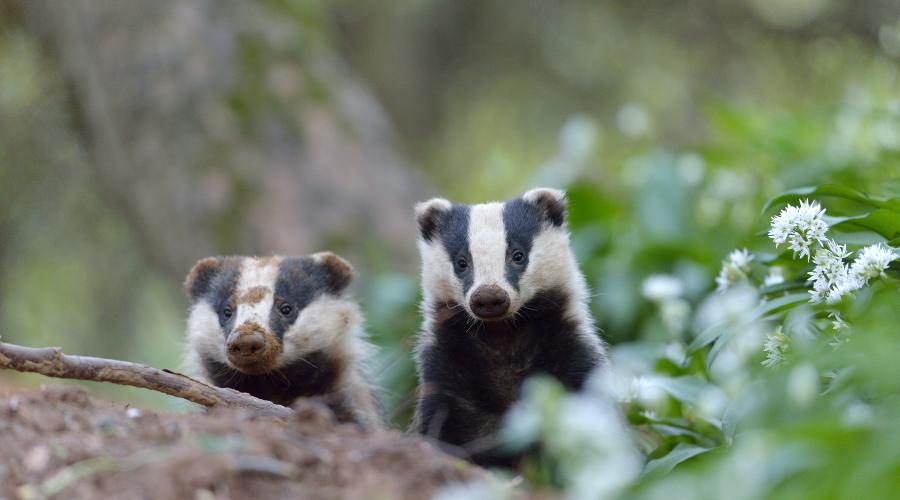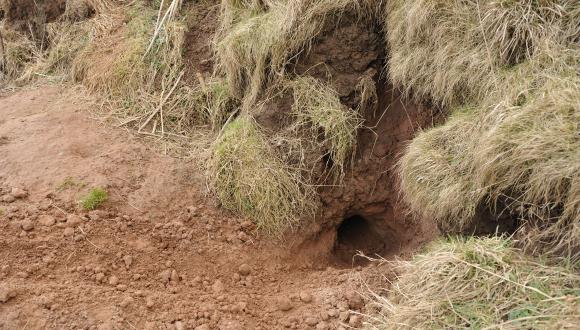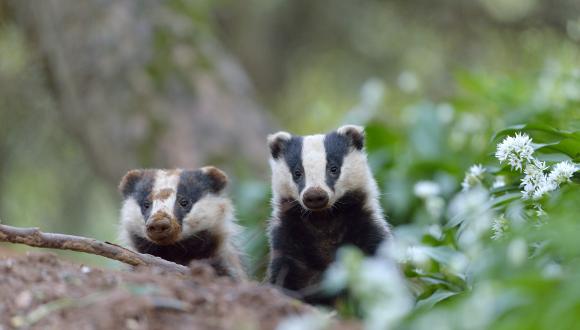
Badger
Though seldom seen by us, the badger – Britain’s biggest carnivore – is still found across Scotland, often in surprising numbers.
Badgers are seldom seen in the wild despite their healthy population size, widespread distribution across mainland Scotland and easily recognisable form. This is largely due to their nocturnal habits and general shyness.
These highly social animals have distinct social groups, typically of four to six adults. Badgers live in networks of underground tunnels called setts, and most social groups have a number of setts in the territory they use. Most important is the main sett, where breeding and most other activity takes place. You can spot a sett by its large entrances and mounds of excavated earth outside.
Other signs of badgers, seen in towns and countryside, include:
- neat latrine pits – used to mark the edges of a territory
- their distinctive paw prints in mud
- scrapes and snout marks where they’ve snuffled through the grass
You can watch badgers at a sett quite legally as long as you take care not to disturb the animals or their home: sit downwind and be very quiet. The best chance to see badgers emerge from the sett is in early summertime.
The Scottish Wildlife Trust organises badger watches in various locations. There are also public hides at New Lanark and Strathspey.
Omnivorous badgers
Although badgers are taxonomically classified as carnivores and the biggest member of that group to be found in Britain, they are actually omnivorous like us. They feed on a wide variety of animal and plant-based food, but their preference is for earthworms.
Each night, on leaving their setts, badgers check the air to work out where in their territory worms will be emerging from the soil. In droughts, worms stay underground and badgers must turn to other foods – animal and vegetable.
The badger’s love of worms has helped it to survive the destruction of most of our woodlands. Ancient woodland has the highest densities of earthworms, but worms remain in sufficient numbers to support badgers even where woods have gone.
A territory is typically around 70 to 120 hectares where the habitat provides a good food supply. The territory may be much larger in less productive habitat.
Threats to badgers
Badgers have long been persecuted in Britain. Badger baiting involves badgers being dug out of their setts and dogs unleashed on them. Such cruelty has led to strong legal protection for badgers (and their setts).
Protection of badgers
Find out about the badger as a protected species.
Learn about badgers and licensing.
Read our guidance for planners and developers on protected animals.
Report a sighting
Find out how to report badger sightings, badger setts and badger road casualties on the Scottish Badgers website.







